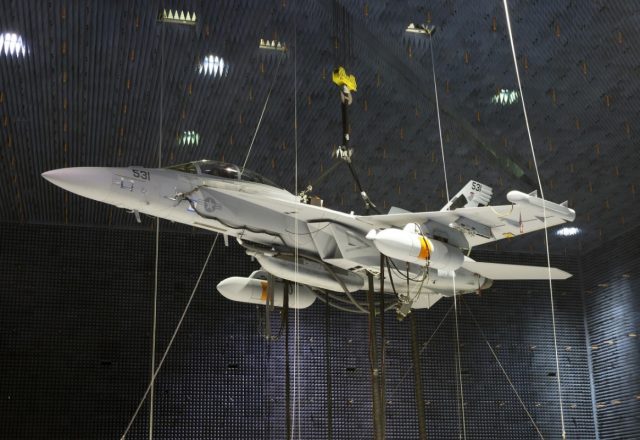The US and Australian defense departments have officially reached an agreement on expanding their cooperation on the development of joint jammer technology capabilities.
The two countries signed the next generation jammer low band (NGJ-LB) project arrangement (PA) on July 13 to ensure commonality on future jamming variants. The jointly managed cooperative partnership gives both countries more benefits to include shared costs and risks.
“Our processes are further enhanced by international partnerships like this one,” said US Navy Rear Adm. Shane Gahagan, Program Executive Officer for Tactical Aircraft Programs. “I commend everyone involved in making this happen for their great work so that together we can reduce costs and increase capabilities for our partners and our Navy.”
The NGJ-LB capability is part of a larger NGJ system that will augment, and ultimately replace the ALQ-99 tactical jamming system (TJS) currently used on the EA-18G Growler aircraft. This expanded partnership will allow commonality between the two countries who both operate the Growler.
“This expanded partnership with Australia to develop the newest airborne electronic attack (AEA) jamming capability shows the level of commitment of both countries to ensure continued superiority of the electromagnetic spectrum,” said U.S. Navy Capt. Michael Orr, AEA Systems program manager (PMA-234), who oversees all NGJ programs. “The NGJ-LB PA allows for joint sharing of the best technologies in the world, furthering the AEA capabilities of both the US Navy and the Royal Australian Air Force (RAAF).”
The NGJ-LB program is currently in the materiel solutions analysis phase executing two demonstration of existing technologies contracts with L3Harris and Northrop Grumman Corporation. The program will enter the next phase of acquisition when the capability block 1 contract is awarded fall 2020. NGJ-LB will utilize the latest digital and software-based technologies that will address advanced and emerging threats in the lower frequency bands of the electromagnetic spectrum.
Additionally, the two countries signed a second memorandum of agreement in May to enter production, sustainment and follow-on development of the AN/ALQ-249 next generation jammer mid-band (NGJ-MB) and follow-on variants.
“Having a cooperative sustainment strategy will increase military effectiveness at home and abroad, strengthen technology capabilities, and reduce a duplication of effort across nations,” said Orr.
The NGJ-MB program is currently in the engineering and manufacturing Development stage and will begin developmental flight testing on the EA-18G Growler this summer. The program expects to complete milestone C this fall with a low rate initial production contract award to follow.



























